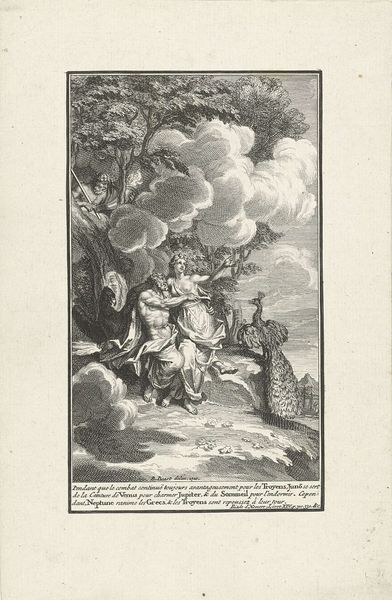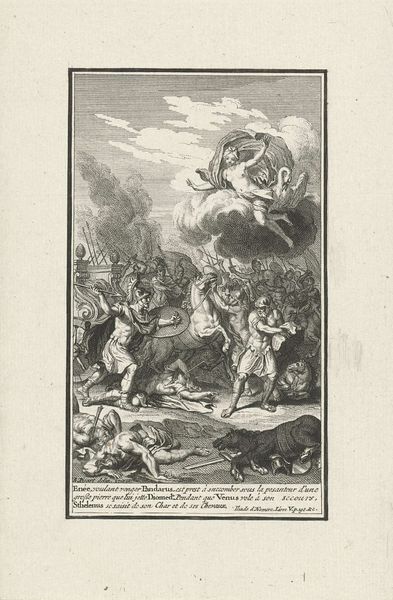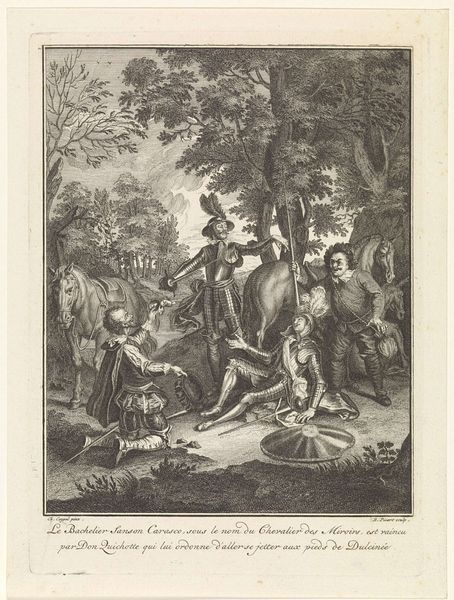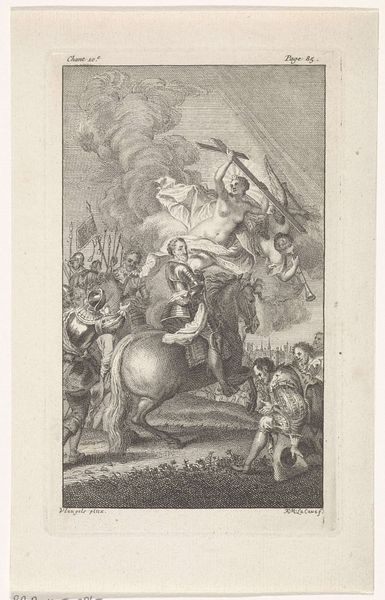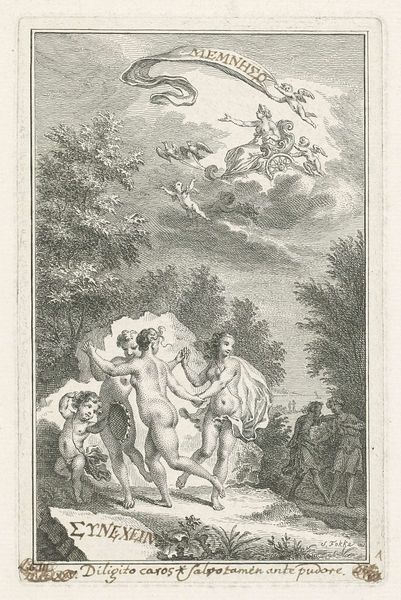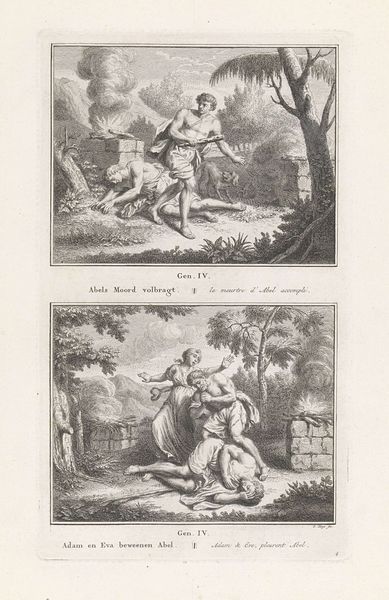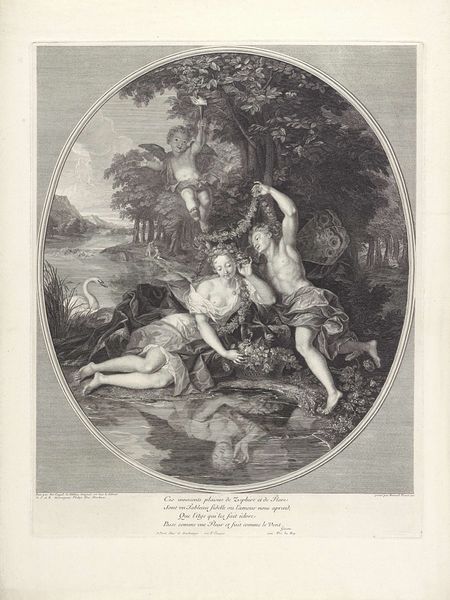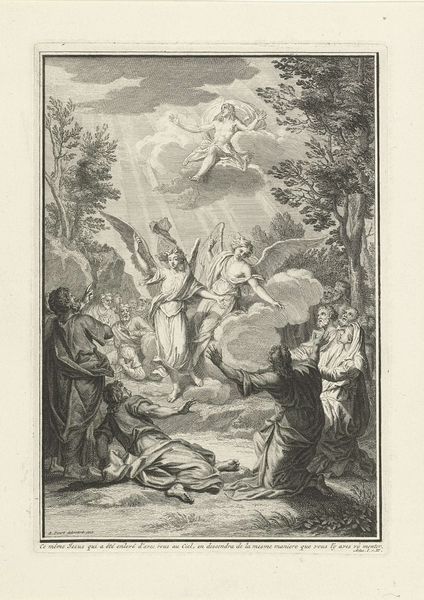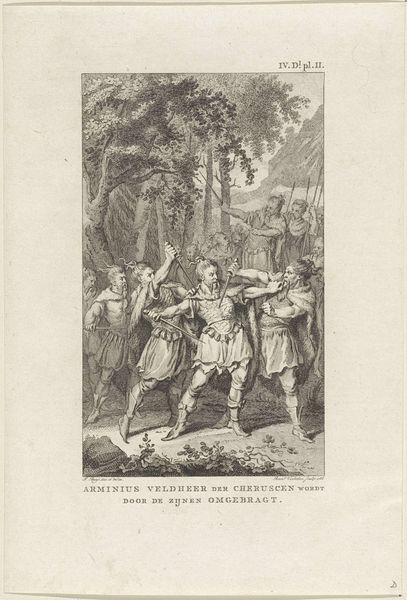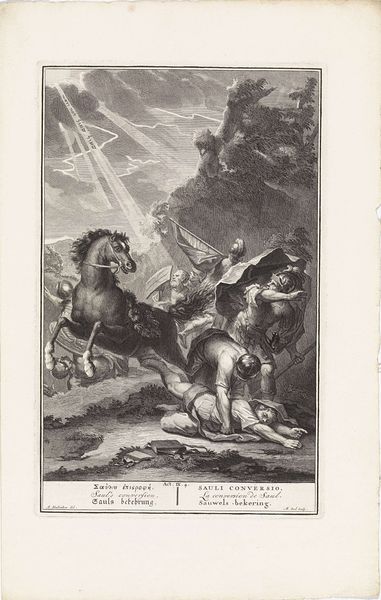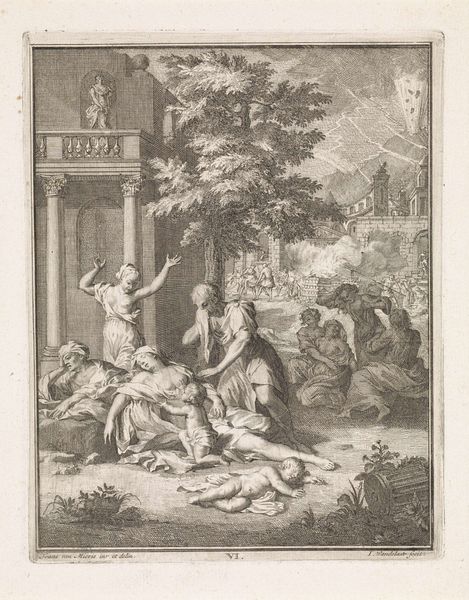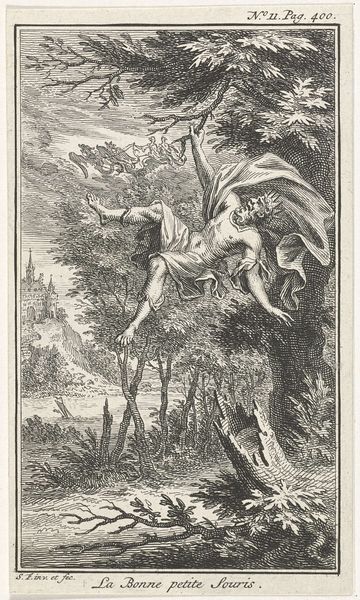
engraving
#
allegory
#
baroque
#
old engraving style
#
figuration
#
line
#
history-painting
#
engraving
Dimensions: height 189 mm, width 125 mm
Copyright: Rijks Museum: Open Domain
Editor: Here we have Bernard Picart’s 1710 engraving, "Apollo gives Hector new strength." The dramatic light and swirling figures give the piece a sense of both urgency and the divine. What symbolic significance do you find embedded in this depiction? Curator: Well, considering Picart's fascination with allegory, observe how Apollo, bathed in light, descends to aid Hector. Light here functions not merely as illumination, but as a visual signifier of divine intervention, of reason and order being imposed on human chaos. How might the placement of the figures against the dark tree suggest the burden of history? Editor: I hadn't considered the tree in that light—it almost feels like a silent witness. So, Apollo’s light pushing back against the weight of the past? Curator: Precisely. Consider also the iconography of Apollo. Beyond being a sun god, he’s linked to healing and prophecy. His presence suggests a cyclical promise, a rebirth. This scene from Homer uses well-worn, mythic symbols. What sort of emotions are these symbols intended to stir in the viewer? Editor: A sense of hope, maybe? Even with Hector fallen, there's this reassurance of renewal... of something beyond mere mortal strength. The cultural memory reinforces this hope. Curator: Indeed. It serves as an encouragement; despite the toils of life, there’s a larger narrative in play, where strength—inner and external—is always accessible. Even in apparent defeat, cycles of rebirth exist, doesn't it? Editor: That's given me a totally different view of the work! Thanks so much for the insight. Curator: My pleasure! Recognizing familiar symbols equips us to engage art history in more interesting and diverse ways.
Comments
No comments
Be the first to comment and join the conversation on the ultimate creative platform.
